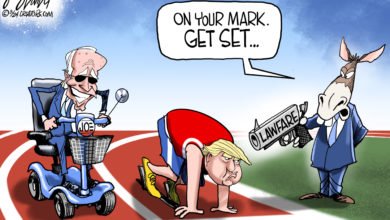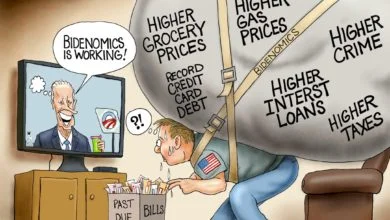Why the Time Is Ripe to Finally Repeal the Draft
Last month, the Supreme Court declined to hear a challenge to the all-male selective service system, deferring the matter to Congress. Now, two different legislative responses are on the table: whatever comes out of the Final Report of the National Commission on Military, National, and Public Service, which recommended that the draft apply to women as well as men; and, The Selective Service Repeal Act of 2021, which would eliminate conscription in the United States.
Expanding the draft might seem like a logical step, since the military lifted the ban on women serving in combat in 2013. It would remove a discriminatory policy and reaffirm America’s commitment to equality under the law.
Service exemptions during the Korean and Vietnam wars favored the wealthy and educated. And black men were 16.3 percent of Vietnam draftees but only 11 percent of the total population.
But the right decision is to repeal the draft entirely. Beyond its historic unpopularity and uneven enforcement, the draft produces a lower-quality military. And although adjusting the Selective Service System would probably not reactivate the draft, keeping the law on the books still harms those eligible.
A Brief History of Compulsory Service
In early America, state and local governments required men to join local militias, participate in mandatory training, and fight if war broke out. Enforcement was often ineffective, however, and widespread opposition meant conscripted soldiers were rarely drafted. An early national draft during the War of 1812 met fierce opposition and failed in Congress.
The first national drafts were instituted during the Civil War and faced enforcement difficulties. Anti-draft riots in New York cost millions in property damage and killed at least 100 people. The Confederate draft was infamously inequitable, exempting wealthy plantation owners and accepting bribes from those wishing to avoid service.
Today, the draft remains unpopular, with 74 percent of Americans opposing reinstatement.
During World War I, protestors challenged the draft in court, held labor strikes, and evaded military service. Harsh enforcement policies meant that jailed resistors were tortured, with some dying from their injuries. The Board of Inquiry, established to determine conscientious objectors’ honesty, sentenced men to death, life imprisonment, and punitive labor camps.
Although public support for mandatory military service increased following the German advance in Europe, the FBI still prosecuted half a million people for draft evasion. Among the protestors were several hundred Japanese Americans, forced to fight for the US government while it held their families in internment camps.
The Selective Service Act of 1948, which established the current framework, has followed similar patterns. Service exemptions during the Korean and Vietnam wars favored the wealthy and educated. And black men were 16.3 percent of Vietnam draftees but only 11 percent of the total population. Today, the draft remains unpopular, with 74 percent of Americans opposing reinstatement.
The Benefits of a Volunteer Military
The draft has other serious negatives. According to Melvin Laird, the Secretary of Defense who oversaw the transition to an all-volunteer force in the 1970s, the volunteer military is both higher performing and more cost-effective than a drafted one. This is partially because drafted soldiers serve for shorter periods of time, increasing training costs. A 1988 study estimated that the savings on training and supervising were $6 billion annually.
Although no American has been drafted since 1973, failing to register carries severe penalties.
The draft also causes labor misallocation. People serve in the military for the same reasons they choose any profession: a passion for the work, and the highest possible returns to their labor. This makes it a productive use of their time. The same is not always true for draftees; military service thus entails opportunity costs. The forgone output is not readily measured, but research suggests the number is significantly negative.
And although no American has been drafted since 1973, failing to register carries severe penalties. Non-registrants are prohibited from federal student aid, jobs, and job training. Young immigrants lose eligibility for citizenship. And prosecutions, though rare, come with a fine of up to $250,000 and five years in jail. Most states also link draft registration to driver’s licenses and have comparable student aid and employment laws.
Compliance rates are currently high, with about 91 percent of eligible men signed up in 2017. But the costs of failing to register are disproportionately borne by individuals least able to afford it: poor Americans, immigrants, and ex-convicts. The Selective Service estimates that non-registrants in California were denied $99 million in jobs and benefits between 2007 and 2014.
Congress’s interest in reexamining the Selective Service system is welcome. By eliminating national conscription, we can strengthen our commitment to human freedom and foster a more efficient military.
This article was originally published on FEE.org




